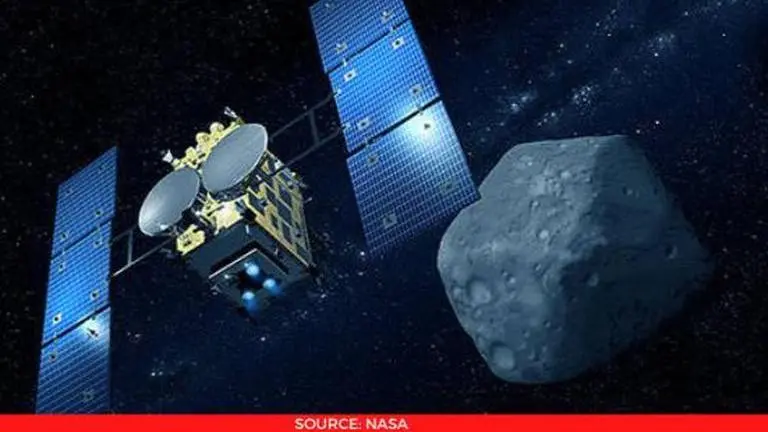Updated 8 December 2020 at 19:59 IST
Asteroid Samples arrive in Japan as Hayabusa 2 finishes its Six-year Space excursion
The 2014 Japanese probe Hayabusa-2 has finally returned to Eartha and has arrived back in Japan. Read on to find out what did the space probe bring.
- Science News
- 2 min read

Japanese researchers and scientists are rejoicing as samples of an asteroid 300 million kms from Earth arrived in Japan on Tuesday, December 8, 2020. The space expedition Hayabusa 2 which brought the asteroid samples home was welcomed with applause and smiles, as Japanese researchers celebrated the climax of a six-year odyssey. The space probe was pursuing the origins of life.
Hayabusa 2 plunges to upon its return, lands in Australia
A report in BBC states that Hayabusa2, which was named for the peregrine falcon, had blasted off for the asteroid Ryugu in December 2014. The space probe overcame an unexpectedly rough landing surface when it reached the asteroid and attempted to collect samples of asteroid dust in a capsule. Upon its return to Earth, the capsule plunged to earth in Australia on Sunday, December 6, and was flown to Japan.
Advertisement
The final stage of its journey towards Japan’s Aerospace Exploration Agency (JAXA) was covered by a bus. The research centre is located outside Tokyo, where gleaming researchers stood and greeted the probe. The return of Hayabusa 2 was followed by a news conference in which, project manager Yuichi Tsuda stated that the capsule had returned, and its return had filled him the realisation that it had gone all the way to the asteroid and back came welling up.
Advertisement
Why study Asteroid samples to understand the origin of life on Earth?
A report on NASA’s official website reveals that asteroids are believed to have formed at the dawn of the solar system. Hence, many scientists say that the sample may contain organic matter that could have contributed to life on Earth. The Hayabusa2 had orbited above Ryugu for a few months before landing. While landing the probe used small explosives to blast a crater and collected the resulting debris, with the expectation that some 100 milligrams may have been gathered. After dropping off the capsule, the probe then changed it’s course, heading back into space.
Next up comes opening the capsule. The BBC report states that the researcher Tomohiro Usui has stated that by as early as next week it may be known if sufficient material has been collected. The work will be extremely delicate. The capsule will have to be opened very delicately so as not to break it.
Published By : Disha Kandpal
Published On: 8 December 2020 at 19:59 IST
